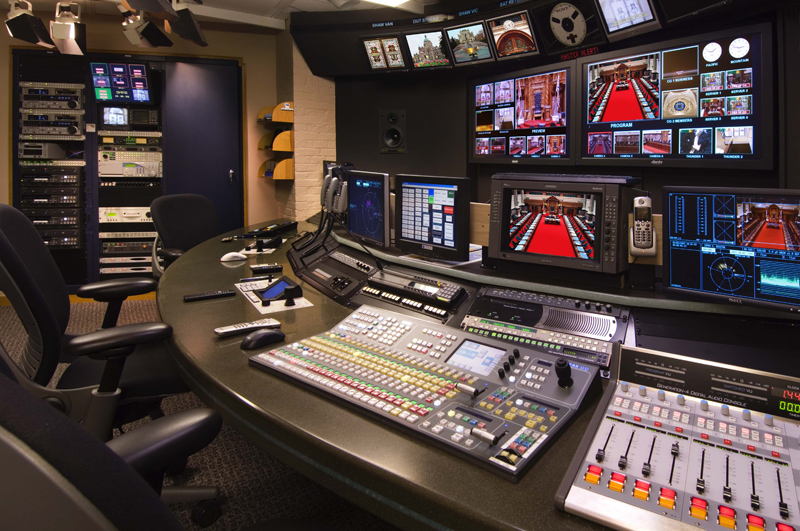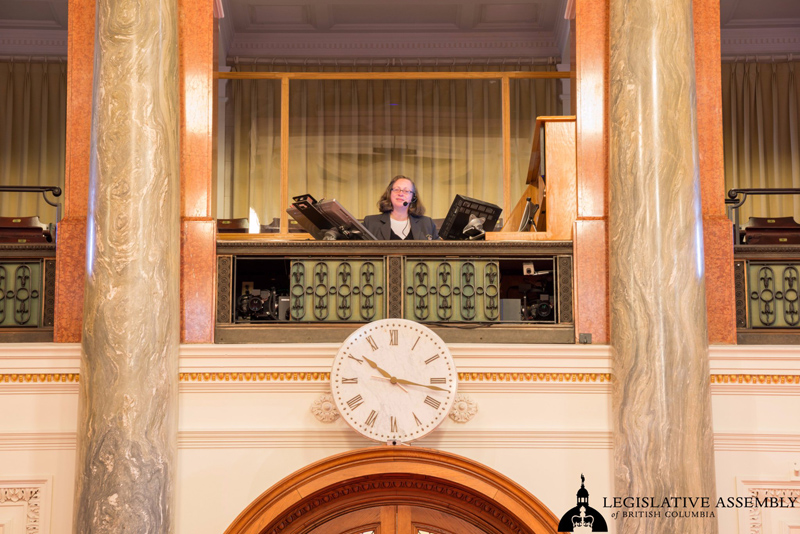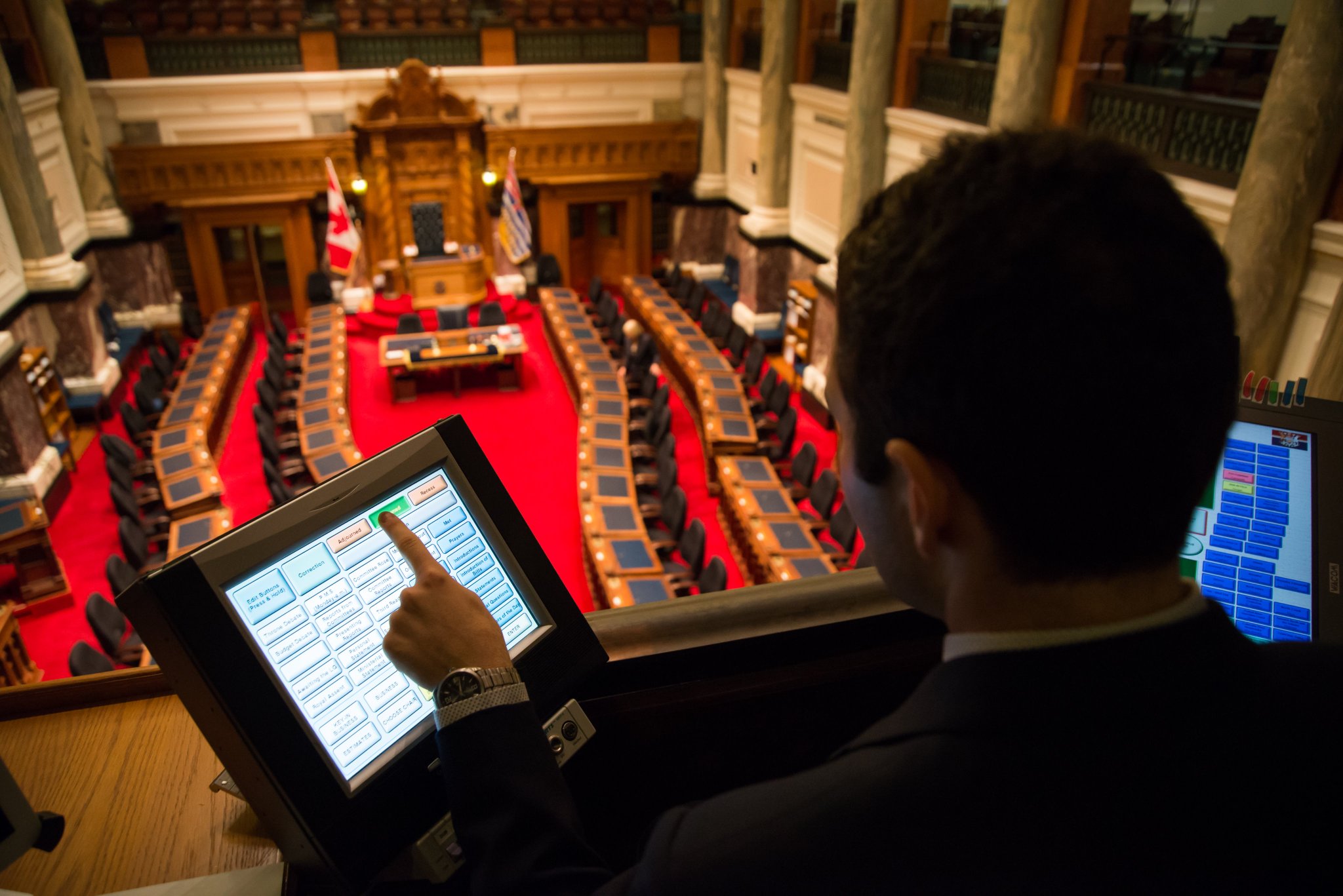Hansard Broadcasting began in the spring of 1991 with live, gavel-to-gavel TV coverage of all proceedings in the Legislative Chamber. In 2005, cameras were installed in the Douglas Fir Committee Room, enabling full TV coverage of debates in the Committee of Supply.
Following the first sessional broadcast - which used a temporary television system - construction of a permanent television centre began in September of 1991. An existing storage vault, located directly under the Legislative Chamber, underwent extensive renovation. Six cameras were installed in specially designed enclosures, two on either side of the Chamber and two at the end facing the Speaker's Chair. The camera enclosures are fully recessed and unobtrusive, opening from behind to allow for maintenance even while the House is in session.
To ensure accuracy and cost-effectiveness, Hansard Broadcasting was designed to be as automated as possible. Robotic cameras are integrated with a microphone selection system. A Hansard staff member sits at a computer console in a booth above the Chamber and selects the microphones of individual MLAs as they are recognized (allowed to speak) by the Speaker. This causes the audio computer to turn a particular microphone on and adjust the volume for the Member's voice. It then signals the video computer to focus the robotic cameras on that Member.
Hansard maintains webcasts and live streams of Assembly proceedings, written transcripts of Assembly proceedings and votes, as well as audio recordings of committees sitting throughout the province. Hansard additionally retains a large inventory of archival videos and transcripts that are available online.
Hansard ensures that the legislative business recorded is available to the public on the Legislative Assembly website.
Hansard is a "full report, in the first person, of all speakers alike, which, though not strictly verbatim, is substantially the verbatim report, with repetitions and redundancies omitted and with obvious mistakes corrected, but which on the other hand leaves out nothing that adds to the meaning of the speech or illustrates the argument." That statement of Hansard policy was written in 1907 for the U.K. Parliament, and it continues to apply throughout the Commonwealth.



